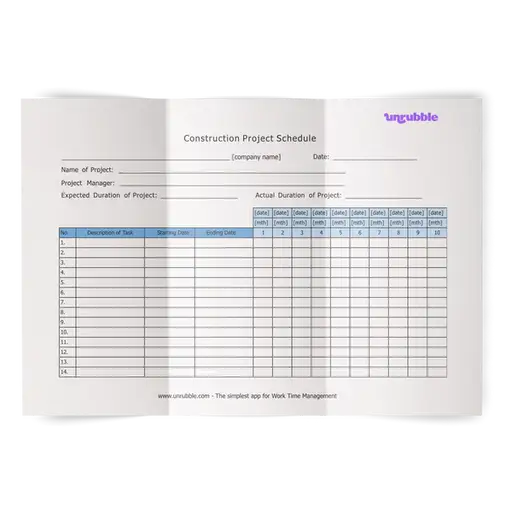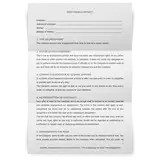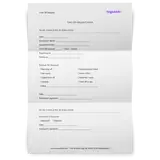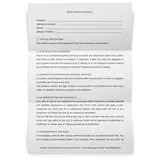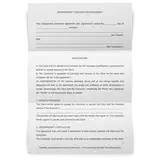When working on construction projects, being organized is one of the most significant factors in ensuring that projects will run smoothly and end up being successful.. This construction project template is a highly useful tool to make sure that your project is on track and running smoothly according to schedule.
Here’s a sample Construction Project template that can be easily customized and adapted to meet your requirements. It’s free to download and use.
What is a construction project schedule?
A construction project schedule is a schedule that allows you to see your progress when working on a construction project. It needs to be well planned to make sure that specific tasks do not overlap and that you are sticking to the right amount of time for each task. If you notice that one task is taking longer than anticipated, rearrangements can be made to accommodate this. That is the beauty of a construction project schedule - it can be flexible if needed, but it gives you the basic guidelines.
A construction management template should include important details like who the project manager is and how long the expected duration of the project is. This will give you and your employees a good overview of how long the project should take to complete and which arrangements need to be made. It should also include the actual amount of time that the project took to complete, for review and feedback purposes. If it took too long, you can look at the schedule as a whole, assess the reasons, and find out where the problems occurred.
Other important details include the name and number of each task, as well as that specific task's starting date and ending date and its duration throughout the year.
Why is it important?
Having a projected timeline and a record of the actual timeline of your construction project can save you a lot of time and money. If your construction timeline is worked out correctly and your team can stick to it, you can eliminate the chances of incurring extra fees and costs due to working on the project longer than you expected.
Having a project schedule can also help you to see if it is possible to complete a project within the amount of time that your client wants. If you can tell that it will not be possible, you can discuss this with your client beforehand and this will help to avoid any penalties for taking longer than the desired amount of time. A schedule also provides your team with structure. They will know what to expect during each period and this will avoid confusion and misunderstandings within the team.
Because construction is a field where details and planning are crucial, improvising rarely works out. Obviously, using a schedule can not always prevent unforeseen circumstances, but it creates a stable plan for your project and will make dealing with these unforeseen events a lot easier. It will definitely put you, your team, and your clients at ease. You will be able to purchase the materials and equipment you need for each task well ahead of time.
Not only does this positively affect your productivity but also that of the other parties involved. Designers, tilers, plumbers, and electricians jobs are a lot easier when they know what to expect and when they will be needed. By doing this, you create a favorable ripple effect throughout every aspect of the project.
Another massive benefit to using a construction schedule is the fact that it allows you to plan other projects as well. You will be able to make sure that schedules are not conflicted and that enough employees are available for each project.
How to use a construction project template effectively
First of all, estimate how long you think the project will take. If you are uncertain about exact start and end dates, an approximate timeline is fine to start off with. Arrange the tasks to be completed in the subsequent order that they should take place. Of course, tasks will overlap in the time frame, and knowing which ones beforehand will help you to plan your time better.
Make a note of who is responsible for which tasks. Again, this prevents conflicts between multiple projects and helps to avoid confusion. Make sure that you allocate enough time for each task or phase and that you are aware of the necessary activities, equipment, machinery, costs, and safety protocols that apply to each of the tasks.
Starting and completing a construction project, whether big or small, is a stressful ordeal for everyone involved. It is a costly and time-sensitive operation by nature. But, planning it out using a construction project schedule will make your life a lot easier. To be successful and keep your clients happy, you simply have to be organized. It will make you come across as professional, increase your client satisfaction, create long-lasting relationships with other contractors, and will have a great effect on the future of your company.
